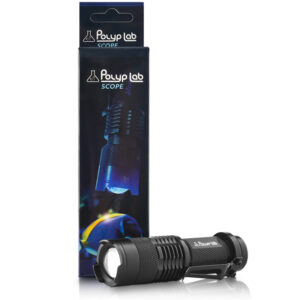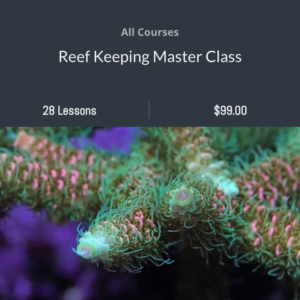There are a number of healthy debates in the hobby and one of the more popular ones is whether or not to go with a live sand bed or bare bottom in a reef tank. Folks in the bare bottom camp like the fact that they can easily siphon off detritus (dead organic matter such as fragments of dead organisms or fish waste) collecting on the bottom of the tank, making it easier to export excess nutrients such as ammonia, nitrates and phosphates. Small amounts of ammonia in the waste can be toxic to many reef inhabitants and high levels of nitrates and phosphates can inhibit coral growth and colors.
Detritus will also be less likely to collect underneath rock work in a bare bottom tank where strong flow can flush it out, making it easier to export it via mechanical filtration. Additionally, SPS will do better with high flow rates, an advantage versus a tank with a sand bed that is more prone to sand storms when the current is too strong.
The Case For A Sand Bed
Ok, now let’s explore some reasons why it might make sense to use a sand bed. On top of what live rock can provide, a sand bed provides another home for bacteria and acts as an additional biological filter for the tank. The bacteria do the heavy lifting when it comes to removing and recycling excess nutrients by absorbing ammonia and phosphates found in fish and invertebrate waste.
A sand bed also provides a food source for corals and other organisms in reef tanks. The sand bed clean up crew, consisting of organisms such as brittle worms, sea cucumbers and snails, produce such things as eggs and larvae that find their way into the water column, acting as a food source for SPS and other filter feeding corals.
Can Sand Beds Become Problematic Over Time?
Sand beds can either be deep or shallow. For arguments sake, let\’s say a deep sand bed is 3+ inches while a shallow sand bed is an inch or two deep. Let’s further assume the benefits mentioned above would apply more often to a deep sand bed versus a shallow sand bed. This leads to another debate or sandstorm (sorry for the pun) on whether a deep sand bed, over time, is dangerous. Will toxic substances, such as hydrogen sulfide, that lie at the bottom, leach out and cause harm to the tank’s inhabitants?
According to Ron Shimek, a noted biologist who wrote a number of articles on deep sand beds, hydrogen sulfide will not migrate up out of the sand bed and poison the tank. He also believes that manual sifting is not necessary to control detritus accumulation. A good sand sifting crew will do the job.
A Personal Choice
For many reef keepers the choice between bare bottom versus a sand bed comes down to aesthetics. I like the look of a sand bed and have always kept shallow ones in my reef tanks. I also love to keep wrasses in my tanks, something that is not possible with many species of wrasses in a bare bottom. Ultimately, folks have had success with bare bottoms, deep sand beds and shallow sand beds. There is no right or wrong answer since each type has its merits.
Additional Resources
If you would like some help with a new tank build, including help designing a custom aquarium, or help re-configuring your current setup then you can visit this page for more information. And if you are looking to add some equipment, I do sell GHL, Pax Bellum, Reef Octopus Calcium and Kalk Reactors and Royal Exclusiv products, including Dreamboxes, which is the equipment I use and recommend. I also sell Reef Brite metal halide and LED fixtures as well as Maxspect & IceCap Gyres.
As for additional insights and information, please explore my many other reef tank and SPS related articles as well as my YouTube channel. For an even deeper dive into reef tank care you can check out my Reef Keeping Master Class. This online course is an immersive and one of a kind educational tool designed to help reef aquarium hobbyists build and maintain a beautiful SPS reef tank. The course is a series of video presentations with some supplemental video from my YouTube channel. There are also quizzes to help students retain and understand the information presented in the course.
Need some frags…..I can help with that as well 🙂 Please visit my SPS Frag store to see what is available.









